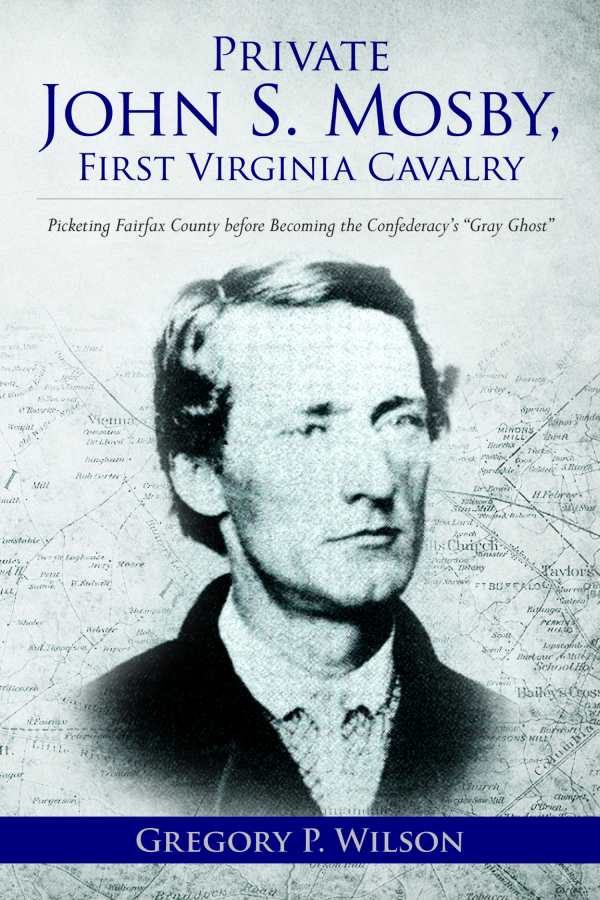Private John S. Mosby, First Virginia Cavalry
Picketing Fairfax County before Becoming the Confederacy's "Gray Ghost"
Wilson paints a portrait of a thoughtful man who was not afraid to change his mind on the culturally accepted practices of the South.
Private John S. Mosby, a lawyer in civilian life, described himself as “an indifferent soldier,” but Gregory P. Wilson conveys his evolution into a valuable member of the Confederate forces in his book, Private John S. Mosby, First Virginia Cavalry.
Most of the story is told through Mosby’s journal entries, memoirs published later in life, and correspondences with his wife, Pauline. Given the sheer number of Mosby’s writings, it is a wonder that he found the time to fight. His missives alternate between reporting the boredom of day-to-day inactivity, such as his success at foraging for food and other valuable commodities, with adrenaline-fueled action on the picket line.
As the Civil War slogs on, each new letter expresses a building sense of excitement and urgency that modern-day readers can understand, even though Mosby could not have known what fate awaited him and the rebel army. He reports, in what some might consider cold-bloodedness, his abject disappointment over not being able to take a lethal shot at a Union officer. Later, he revels in his killing of a combatant. That is, of course, a soldier’s duty, but Mosby’s glee at causing the death of a fellow American is unnerving to the modern ear.
Nevertheless, the author paints a portrait of a thoughtful man, one who was not afraid to change his mind on the culturally accepted practices of the South. Wilson writes about the mutual, almost familial, affection Mosby shared with Aaron Burton, a slave who traveled with his master to various locations during the campaigns. This offers a paradoxical look at relationships between oppressors and oppressed, with the former no doubt seeing themselves as benevolent parental figures. After the war, Mosby freed Burton and other slaves; years later, he reflects on the cruelty of the institution while continuing to support the cultural climate of pre-Reconstructionist America.
Wilson, who majored in politics and history at Ohio Wesleyan University and who is also author of Jonathan Roberts: The Civil War’s Quaker Scout & Sheriff, helpfully provides modern-day geographic landmarks to give the audience—especially Civil War hobbyists who enjoy visiting battle sites—a better understanding of exactly where these adventures transpired. He supplements the text with maps, historic photographs, and other illustrations for additional perspective.
The slim work concerns itself mostly with Mosby’s actions on picket duty for the Confederate army, charged with serving as forward guard for larger forces. Wilson seems to end the book rather abruptly, omitting further narrative as Mosby goes on to earn promotions and praise from his superiors. Perhaps that’s for a future volume.
Reviewed by
Ron Kaplan
Disclosure: This article is not an endorsement, but a review. The publisher of this book provided free copies of the book and paid a small fee to have their book reviewed by a professional reviewer. Foreword Reviews and Clarion Reviews make no guarantee that the publisher will receive a positive review. Foreword Magazine, Inc. is disclosing this in accordance with the Federal Trade Commission’s 16 CFR, Part 255.

